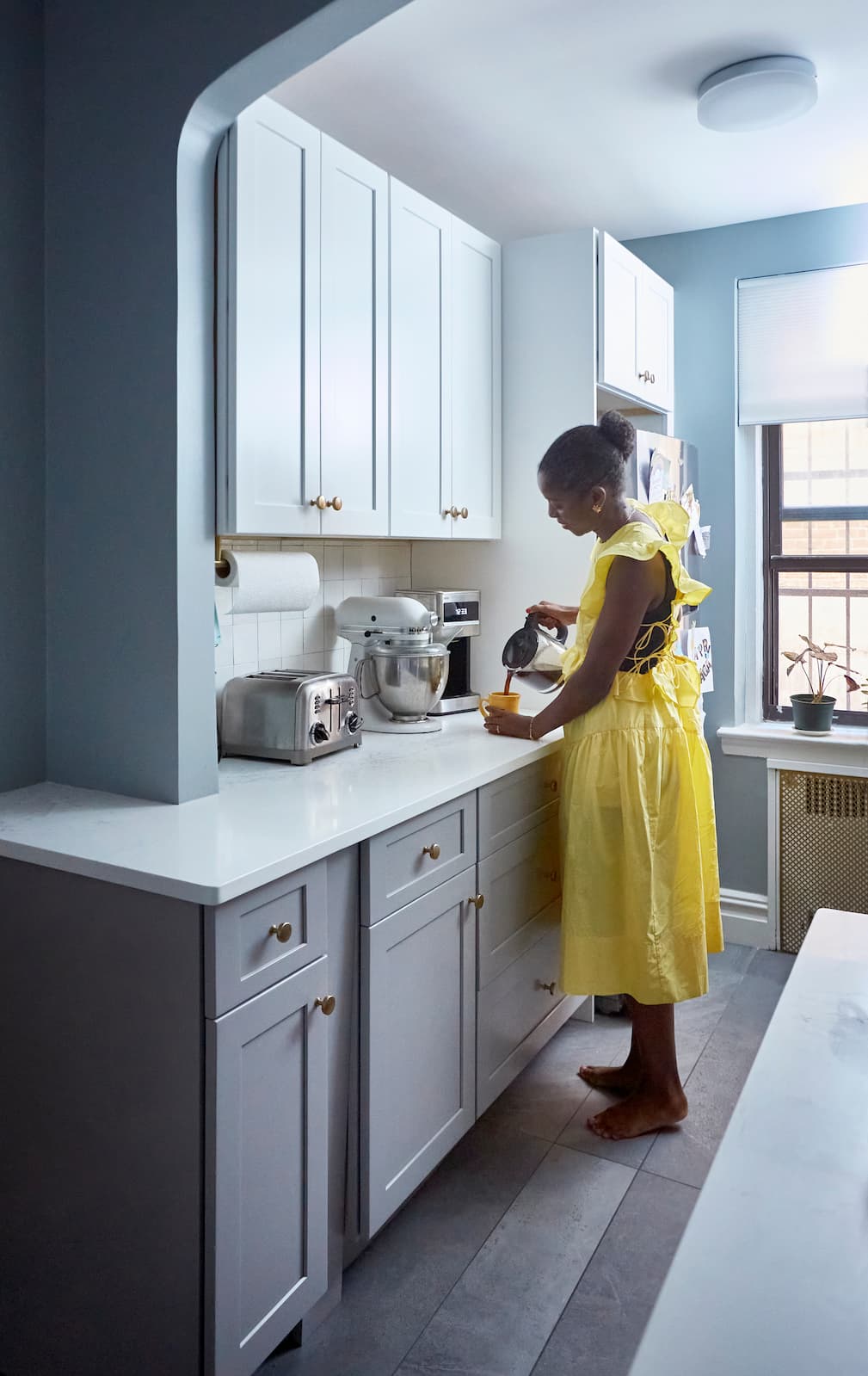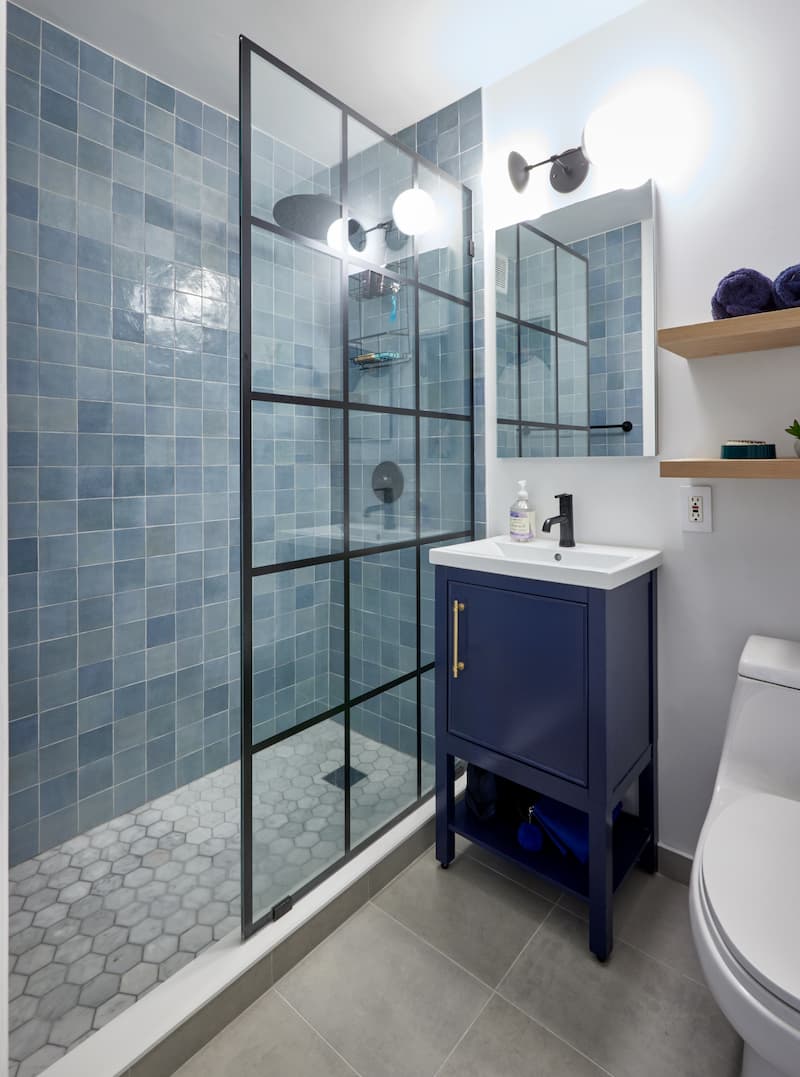Waterproofing a Basement: Cost Breakdown and Next Steps

In This Article
Before you imagine a cozy family room, a home gym, or a guest suite in your basement, there’s one essential step that can’t be skipped: waterproofing. This isn’t just a box to check before refinishing—it’s a foundational investment in your home’s structural integrity and your family’s health. A dry basement protects against mold, mildew, and costly water damage, ensuring your renovation stands the test of time. More than that, it safeguards the very bones of your house, helping you create a space that’s not only beautiful, but also safe and resilient for years to come.
Know the Cost Before You Start

What Does Waterproofing a Basement Typically Cost?
Waterproofing a basement is a crucial investment, but the cost can vary widely depending on your home’s unique needs. Understanding the factors that influence pricing can help you plan confidently and avoid surprises.
Key Basement Factors That Affect Waterproofing Costs:
- Size of the Basement: Larger spaces require more materials and labor, which increases the overall cost.
- Severity of Water Issues: Minor dampness may only need simple fixes, while persistent leaks or flooding call for more comprehensive solutions.
- Type of Waterproofing Solution: Interior versus exterior systems, drainage upgrades, and foundation repairs all come with different price tags.
- Accessibility: Finished basements or those with limited access may require additional work, impacting the final cost.
Common Waterproofing Upgrades and Price Ranges
Interior Sealants and Waterproofing Paint: $500–$2,500
A budget-friendly option for addressing minor moisture by applying specialized coatings to walls and floors. Best for light dampness, not active leaks.
Crack Injection (Epoxy or Polyurethane): $350–$1,200 per crack
Seals foundation cracks from the inside to prevent water intrusion. The number and size of cracks will affect your total cost.
Interior Drainage System (French Drain): $2,500–$8,000
A trench and pipe system installed along the basement perimeter to channel water to a sump pump. Effective for ongoing water issues, but requires some demolition and reconstruction.
Sump Pump Installation: $1,200–$3,500
Removes collected water from the basement, especially in flood-prone areas. Can be combined with drainage systems for added protection.
Exterior Waterproofing Membrane: $6,000–$20,000+
Involves excavating around the foundation and applying a waterproof barrier. This is the most comprehensive—and often most expensive—solution, ideal for severe or recurring water problems.
Gutter and Downspout Upgrades: $600–$2,500
Directs rainwater away from your foundation, reducing the risk of leaks. Sometimes, this simple fix can make a significant difference.
Every basement is different, and the right solution depends on your specific situation. A thorough assessment by a qualified contractor is the best way to get an accurate estimate and ensure your investment delivers lasting peace of mind. Plus, costs may vary based on your location, whether you're fixing up your basement in Philadelphia, Boston, Chicago, or elsewhere.
Waterproofing Your Basement Boosts Your Resale Value
Waterproofing isn’t just about peace of mind—it’s a smart investment in your home’s future. According to industry estimates, a properly waterproofed basement can boost your home’s resale value by 10–30%. But the real value goes deeper. By preventing mold, mildew, and structural damage, you’re also avoiding the kinds of costly repairs that can derail a sale or force you to accept a lower offer. Buyers are quick to notice signs of water damage, and a dry, healthy basement is a powerful signal that your home has been well cared for. In short, waterproofing is about prevention—protecting both your investment and your family’s well-being.
Signs You May Need Waterproofing
Not sure if your basement needs attention? Here are some common warning signs:
- Damp or Musty Odors: Persistent smells often signal hidden moisture or mold.
- Visible Water Stains: Discoloration on walls or floors is a clear indicator of water intrusion.
- Efflorescence: White, chalky residue on masonry surfaces points to water evaporating and leaving mineral deposits behind.
- Peeling Paint or Bubbling Wallpaper: Moisture trapped behind finishes can cause them to lift or peel.
- Cracks in Walls or Floors: Even small cracks can allow water to seep in, especially during heavy rain.
- Pooling Water or Puddles: Any standing water is a sign that immediate action is needed.
If you notice any of these issues, it’s wise to consult a professional before starting any basement renovation.
Renovate with confidence every step of the way
Step 1: Personalize Your Renovation Plan
Step 2: Receive Quotes from Trusted Contractors
Step 3: Let Us Handle the Project Details

What Does Waterproofing a Basement Commonly Entail?
Waterproofing your basement is rarely a one-size-fits-all project. The right approach depends on your home’s unique needs, the source of moisture, and your long-term plans for the space. Most solutions fall into two main categories: interior and exterior waterproofing. Here’s what you need to know about each.
Interior Basement Waterproofing
Interior waterproofing solutions are designed to manage water that has already entered your basement or to prevent minor moisture from becoming a bigger problem.
Interior basement waterproofing tends to cost less and cause less disruption than exterior work; can be installed year-round; effective for managing mild to moderate moisture issues. However, it may not address the root cause of severe water intrusion; often works best as part of a larger, layered strategy.
Interior Sealants and Coatings: Applied directly to basement walls and floors, these products block minor moisture from seeping through. They’re affordable and easy to apply, making them a good first step for mild dampness. However, they’re not a solution for active leaks or flooding and may need to be paired with other methods for lasting results.
Crack Repair and Injection: Foundation cracks are sealed using epoxy or polyurethane injections, stopping water from entering through small gaps. This process is often used alongside other waterproofing methods. The number and size of cracks will affect the overall price, and it’s most effective for isolated problem areas.
Interior Drainage Systems (French Drains): These systems are installed beneath the basement floor along the perimeter, collecting and channeling water to a sump pump. While this is a more involved project that requires some demolition and reconstruction, it’s highly effective for persistent water issues and can help keep your basement dry even during heavy rains.
Sump Pump Installation: A sump pump is placed in a pit at the lowest point of the basement, automatically removing water that collects there. This is essential for homes in flood-prone areas and can be combined with drainage systems for maximum protection. Regular maintenance is key to ensuring reliability.
Vapor Barriers: Heavy-duty plastic or foil sheets are installed on walls or floors to prevent moisture from migrating into the basement from the surrounding soil. Vapor barriers are especially useful in homes with high humidity or persistent dampness. While not a standalone solution for major leaks, they can be an effective part of a comprehensive waterproofing strategy.
Exterior Basement Waterproofing
Exterior waterproofing tackles the problem at its source—preventing water from ever reaching your basement walls. It addresses the root cause of water intrusion; highly effective for severe or recurring issues; can dramatically improve long-term protection. Because of this, exterior waterproofing is typically more expensive and disruptive and may require excavation and significant landscaping work. Plus, contractors require fair weather to complete the project.
Exterior Waterproofing Membrane: This comprehensive approach involves excavating around the home’s foundation, applying a waterproof membrane, and installing exterior drainage. It’s highly effective for severe or recurring water problems, but also the most disruptive and labor-intensive solution.
Gutter and Downspout Improvements: Upgrading gutters and downspouts helps direct rainwater away from your foundation, reducing the risk of leaks. Sometimes, this simple fix can make a significant difference, especially if your current system is undersized or clogged.
Grading and Landscaping Adjustments: Regrading the soil around your home ensures that water flows away from the foundation rather than toward it. This can involve adding soil, reshaping landscaping, or installing swales. While often less expensive than major structural work, proper grading is a powerful preventative measure that can significantly reduce the risk of basement leaks.
Window Well Installation and Covers: Basement windows that sit below ground level are vulnerable to water intrusion. Installing window wells with proper drainage and secure covers helps keep rain and debris out, protecting your basement from leaks. The cost depends on the number and size of windows, but this upgrade can be a smart investment for homes with below-grade windows.
Foundation Drainage Tile Replacement: Older homes may have clay or concrete drainage tiles around the foundation that have deteriorated over time. Replacing or upgrading these with modern perforated piping can dramatically improve exterior drainage. This is a more involved and costly project, often requiring excavation, but it can resolve chronic water issues that other solutions can’t address alone.
Each of these waterproofing solutions targets a different aspect of basement moisture. The right combination for your home will depend on your foundation type, local climate, and the specific challenges you’re facing. A thorough assessment by a qualified contractor can help you create a plan that protects your investment and supports your vision for a healthy, livable basement.
Turn your renovation vision into reality
Get matched with trusted contractors and start your renovation today!
Find a Contractor
Can Any Waterproofing Projects Be Done DIY?
Some basement waterproofing projects—like installing a sump pump or setting up a full drainage system—are best left to experienced professionals. While it can be tempting for a proactive homeowner to tackle smaller tasks, such as applying sealant or filling cracks, in hopes of saving on costs, it’s important to weigh the risks and rewards.
Our advice? Proceed with caution. While DIY solutions may seem straightforward, working with a contractor who specializes in basement waterproofing offers distinct advantages:
- Accurately identify your home’s unique vulnerabilities, ensuring that the root cause of moisture is addressed—not just the symptoms.
- Recommend the most effective solutions for your specific situation.
- Ensure proper implementation; after all, a sealant is only as effective as the preparation and application behind it.
- Spot hidden issues—such as structural concerns or mold growth—that may not be obvious to the untrained eye.
- Provide warranties and peace of mind, so you can trust that your investment is protected for years to come.
If you’re planning to refinish your basement, it’s essential to leave waterproofing to the professionals. If waterproofing isn’t done properly the first time, any future repairs will likely require tearing out finished walls, flooring, and built-ins just to reach the foundation and underlying structure. This not only adds significant cost and hassle, but also puts your renovation investment at risk. Prioritizing expert waterproofing from the start ensures your new space remains dry, healthy, and protected for years to come.
Additional Solutions for a Damp Basement
While waterproofing focuses on keeping external water out, other factors can contribute to a damp basement:
- High Indoor Humidity: Everyday activities like laundry, showers, and cooking can raise humidity levels, especially in poorly ventilated basements.
- Plumbing Leaks: Hidden leaks from pipes or appliances can create persistent dampness.
- Poor Ventilation: Without proper airflow, moisture can build up and lead to mold growth.
Ideas to Prevent Basement Dampness
- Use a Dehumidifier: This helps control indoor humidity, especially during humid months. By keeping moisture levels in check, you reduce the risk of mold growth and create a more comfortable, healthy environment in your basement.
- Insulate Pipes: Prevent condensation by wrapping cold water pipes. This simple step stops water droplets from forming and dripping onto floors or walls, which can contribute to dampness and even water damage over time.
- Improve Ventilation: Install vents or fans to promote air circulation. Good airflow helps moisture escape, discouraging the buildup of musty odors and minimizing the conditions that allow mold and mildew to thrive.
- Check for Plumbing Leaks: Regularly inspect pipes and appliances for signs of leaks. Catching and repairing leaks early can prevent small drips from turning into major sources of basement moisture or structural damage.
- Store Items Off the Floor: Use shelving to keep belongings dry and allow air to circulate. Elevating storage not only protects your items from unexpected water but also makes it easier to spot and address any moisture issues before they escalate.
Planning for Basement Waterproofing and Finishing Starts Here
A waterproofed basement is the essential first step to maximizing the space’s usefulness—whether you’re dreaming of a new basement bathroom, in-law suite, home office, or a playroom for your family. Before you can bring any of these visions to life, it’s crucial to ensure your basement is dry, protected, and ready for transformation.
At Block Renovation, we’re here to make that process clear and empowering from the very beginning. Our Renovation Planner allows you to visualize your finished basement, estimate costs, and see exactly how each waterproofing decision will impact your overall budget—before any work begins. We connect you with thoroughly vetted, reliable contractors who specialize in basement projects and understand the importance of getting the details right. With transparent pricing, expert guidance, and a process built around your personal vision, you can move forward with confidence at every step.

Written by Block Renovation

Renovate confidently with Block
Easily compare quotes from top quality contractors, and get peace of mind with warranty & price protections.
Thousands of homeowners have renovated with Block

4.5 Stars (100+)

4.7 Stars (100+)

4.5 Stars (75+)
Renovate confidently
- Top quality contractors
- Warranty & price protections
- Expert resources

